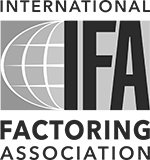Put This Powerful But Overlooked Financing Tool To Work For Your Company
Asset-based lending can be cost-effective, versatile and discreet

For some medium-sized companies in a growth phase, cash flow can become an issue when payables get ahead of receivables. For others, there may be opportunities to buy new equipment, to expand business or to acquire new businesses, but there just isn’t enough cash on hand to make a move. Whatever, the reason, there is a flexible, cost-effective and discreet way to finance these occasions. It’s called asset-based lending, or ABL.
Who turns to ABL? Glen Dalzell, Vice-President of Sales and Marketing for Liquid Capital, says that companies who take advantage of ABL are those who may not qualify for traditional bank lending, which is covenant- and ratio-driven. Others may simply not be getting enough funding through conventional bank lending and they need to augment available funds by getting additional availability from their assets.
“ABL is typically a revolving facility,” Dalzell says, “much like a line of credit from a bank.” The difference, he says, is that it’s more flexible and will generate “greater cash availability.” And like a line of credit, you only use as much money as you need, paying back the principal and interest as you go along.
Long used by very large firms, ABL may have a place in a medium-sized company’s financial toolbox. “If you took all your cash from receivables and bought equipment with it, you’d have a cash-flow problem,” Dalzell says. ABL can be used to space out that cash-flow shortfall. Firms who have less-than-perfect credit ratings—and there are many understandable reasons why this happens among the very best firms—may also want to turn to ABL.
Corporate assets, including inventory, equipment and real estate, can be considered and margined to raise cash through an ABL facility or you can sell your invoices to a lender. Subject to appraisal, a lender will lend against raw materials, finished goods and even work in progress. Equipment can be margined up to 75% of its liquidation value while real estate can be collateralized up to 75% of its market value. With invoices, a lender “buys” your receivables and when you collect on them you reimburse the lender.
One of the advantages of ABL over other forms of non-traditional lending such as factoring is confidentiality of the relationship between you and the lender. Some clients may question a firm that uses alternative methods such as factoring. With ABL, your receivables are deposited in a sweep account at your bank in your firm’s own name, from which an ABL lender collects its interest and principal payments. The process is invisible to your customers. In addition, with a better credit rating and demonstrable operations processes that the lender can understand and interrogate, your costs for ABL can be lower than with factoring.
Still, asset-based lending is not for everyone. Dalzell says that ABL is generally for medium-sized firms or larger. “Typically, ABL comprises a minimum of $1 million to $5 million.” Larger firms, he says, have more complex cash needs and the amount of collateral required has to be large enough to warrant the costs of ABL.




